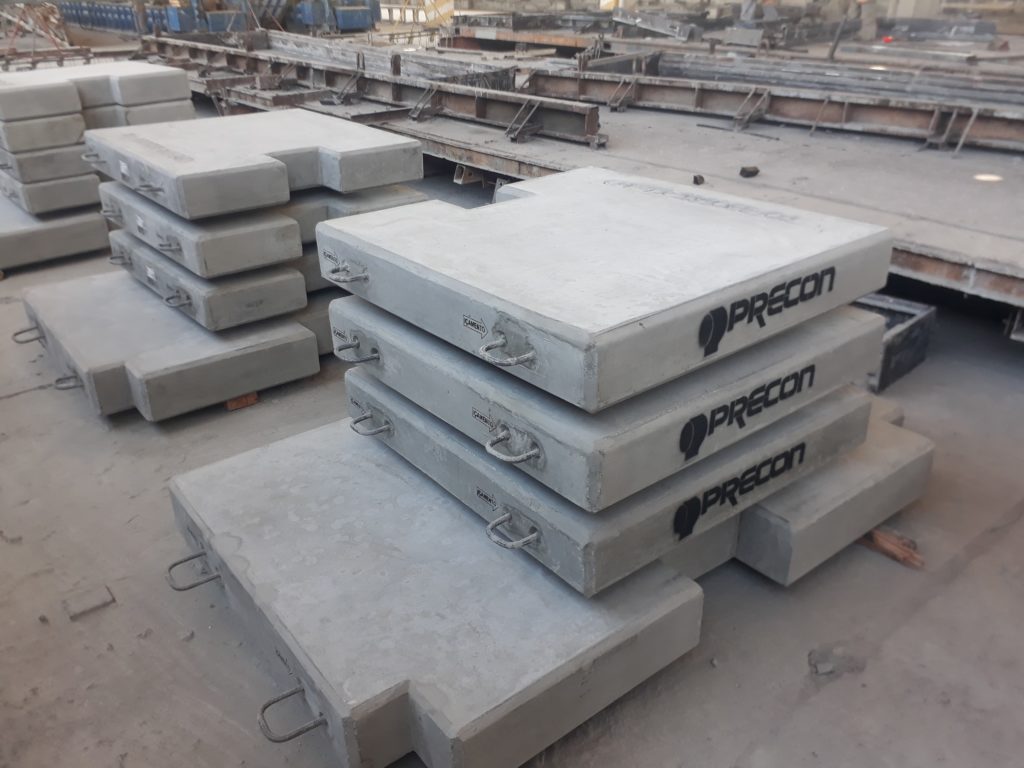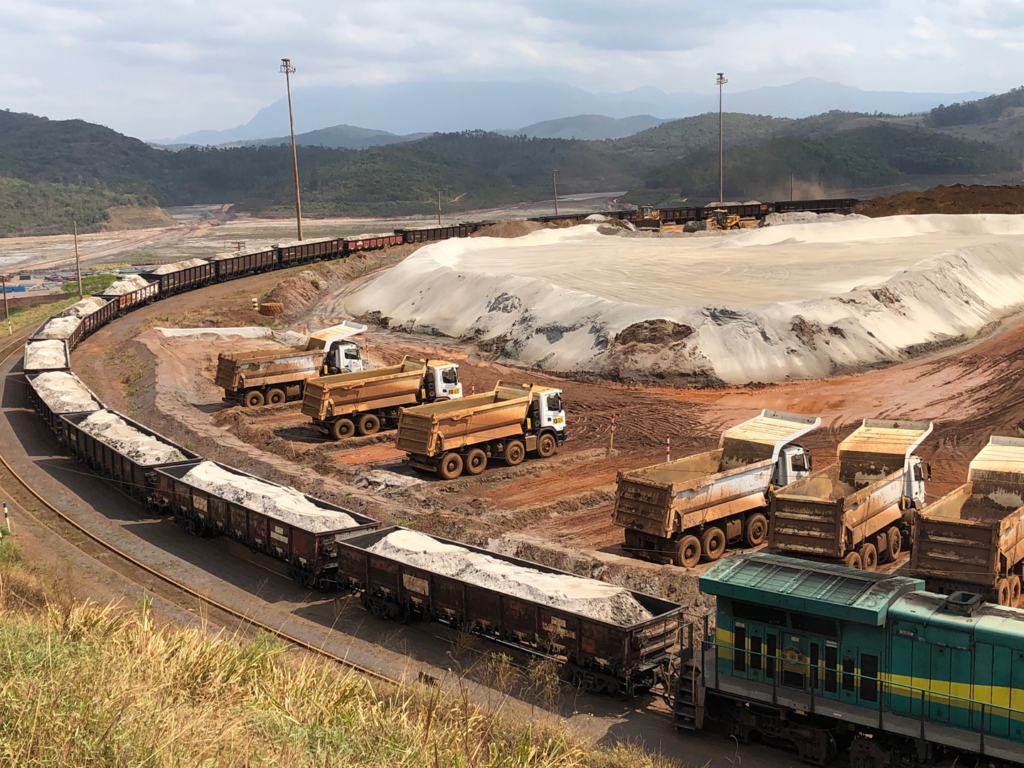After seven years of research and investment of about BRL50 million ($8.9 million), Vale says it has developed a process for producing sand from its production processes with applications in the construction market.
After adaptation in the state of Minas Gerais’ iron ore operations, the sandy material, previously disposed in piles and dams, is now being processed and transformed into a product, following the same quality controls used in the production of iron ore. This year, around 250,000 t of sand has been processed and destined for sale or donation to be used in concrete, mortar, cement and road pavement.
According to Marcello Spinelli, Vale’s Executive Vice President for Iron Ore, the development of this product is the result of more sustainable operating practices.
“This action promotes a circular economy within our units and reduces the impact of tailings disposal for the environment and the society, in addition to being a reliable alternative for the construction industry, where the demand for sand is high,” he said.
Sustainable sand stock yard at Brucutu
Vale’s Sustainable Sand is considered a co-product of the iron ore production process. The material extracted in the form of rocks undergoes several physical processes in the plant, such as crushing, classification, grinding and concentration, until iron ore is obtained.
The innovation introduced by Vale lies in the concentration stage where the by-product of the iron ore processing is once more processed until it reaches the necessary quality to become sand for commercial use. In the traditional method, this material would become tailings and be destined to dams or piles. Every tonne of sand produced represents one less tonne of tailings being generated.
The sand resulting from the iron ore treatment is a 100% certified product, with high silica content and very low iron content, in addition to high chemical and granulometric uniformity.
According to Jefferson Corraide, Executive Manager of the Brucutu and Água Limpa Complex, the sand does not have hazardous characteristics in its composition.
“The mineral processing to obtain the sand is essentially physical, not altering the composition of the materials, so the product is not toxic,” Corraide said.
Recently, Vale’s sand had its application in concrete and mortar certified by three specialised laboratories in Brazil: Instituto de Pesquisas Tecnológicas, Falcão Bauer and ConsultareLabCon.
The properties of Vale sand are also being analysed by an independent study conducted by researchers from the University of Queensland’s Sustainable Minerals Institute (Australia) and the University of Geneva (Switzerland), who are investigating whether alternative construction materials produced from mineral ores could become a sustainable source of sand while significantly reducing the volume of waste produced by mining. These researchers introduced the term “ore sand” to refer to this type of processed sand sourced as a co-product or by-product of mineral ores.

Production scale
Vale has already committed to allocating more than 1 Mt of sand for sale or donation in 2022. Buyers are companies operating in four different regions in Brazil: Minas Gerais, Espírito Santo, São Paulo and Brasília. It is estimated that, in 2023, production will reach 2 Mt.
Rogério Nogueira, Director of Ferrous Marketing, explained: “We are getting ready to scale up the sand destination even more from 2023. For this purpose, we have a team of professionals dedicated to this new business and adapting our operations to meet the market needs.”
Currently, Vale is producing sand for sale and donation at the Brucutu Mine, in São Gonçalo do Rio Abaixo (Minas Gerais).
Other mines of the company, also located in Minas Gerais, are in the process of obtaining environmental and mining approvals for sand production.
André Vilhena, Manager of New Businesses at Vale, said: “Our mines provide a sandy material that is rich in silica, which can be used in different industries. We are working with several institutions, including universities, research centres and Brazilian and foreign companies, to develop new solutions to give new destinations to iron ore tailings.”
In addition to using the existing infrastructure in the iron ore mines, Vale also has a railway and road network to transport the sand to markets in several Brazilian states. “With this activity, our main focus is on the sustainability of our iron ore operations, minimising the environmental liabilities, in addition to seeking to promote employment and income by means of new businesses,” Vilhena said.
Eco products
Vale has been carrying out tailings application studies since 2014. Last year, the company inaugurated the Pico Block Factory, the first pilot plant for construction products whose main raw material is tailings from mining activity. Installed at the Pico Mine, in the municipality of Itabirito (Minas Gerais), the factory promotes a circular economy in iron ore processing operation.
The Federal Center for Technological Education of Minas Gerais (CEFET-MG) provides technical cooperation with the Block Factory. Ten researchers from the institution are working on site during this period, including professors, laboratory technicians and graduates, undergraduates and technical course students. During the R&D period, the products will not be sold.
Another research initiative aims to develop the use of sand in pavement solutions in partnership with Itabira’s campus of the Federal University of Itajubá (Unifei). The focus is on the donation of sand for the pavement of local roads.
More sustainable mining
In addition to the Eco products line, Vale has other initiatives to make its mining more sustainable and reduce the generation of tailings. The company has been developing technology to increase the dry processing of its ores, which does not require the use of water. Currently, around 70% of Vale’s production is dry processed and this shall remain at this level when the production capacity of 400 Mt/y is reached and after the start-up of new projects. In 2015, this figure was 40%.
In Carajás, as the iron content is already high (above 65% Fe), the material is only crushed and screened to be classified by size (granulometry).
In Minas Gerais, in some mines, the average content is 40% Fe. By the conventional method, the ore is concentrated by means of processing with water to increase the iron content, with most of the tailings deposited in dams or pits. This is where another technology under implementation at Vale stands out: FDMS (Fines Dry Magnetic Separation). This technology sees the magnetic concentration of ores of low iron grade with no use of water, and therefore, with no need for dams.
Developed in Brazil by New Steel, a company acquired by Vale in 2018, this technology is already in use in a pilot plant in Minas Gerais. In 2023, the first commercial plant will start up in Vargem Grande, with a production capacity of 1.5 Mt/y and investment of up to $150 million.
Another technology which reduces the need of dams is tailings filtration and subsequent dry piling. Once the capacity of 400 Mt/y is reached, more than 60 Mt/y (or 15% of this total) will be processed in plants, where most of the tailings will be filtered and piled this way.
Vale has already opened a filtration plant in Vargem Grande and three more will be commissioned in the March quarter of 2022: one in Brucutu and two in Itabira. Only 15% of the production will continue to be processed by the conventional method, with wet concentration and disposal in dams or deactivated mine pits.











